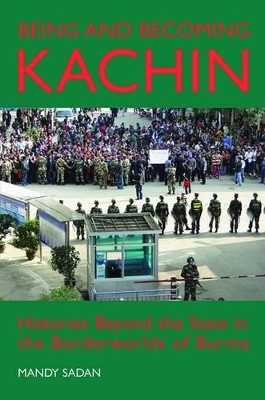British Academy Postdoctoral Fellowship Monographs
1 total work
Since independence in 1948, Burma has suffered from many internal conflicts. One of the longest of these has been in the Kachin State, in the far north of the country where Burma has borders with India to the west and China to the east. In Being and Becoming Kachin Mandy Sadan explores the origins of the armed movement that started in 1961 and considers why it has continued for so long. Being and Becoming Kachin places the problems that have led to
hostilities between the political heartland of Burma and one of its most important peripheries in a longer perspective than is usually the case. It explains how the experience of globalisation and the geopolitics of competing imperial systems from the late eighteenth century onwards produced and then entrenched the
politics of exclusion and resistance. However, it also uses detailed ethnographic research to explore the social and cultural dynamics of Kachin ethno-nationalism as it emerged during this period, providing a rich analysis that goes beyond the purely political. The research draws upon an extensive range of sources, including archival materials in Jinghpaw and an extensive study of ritual and ritual language. Making a wide variety of cross-disciplinary observations, it explains in depth and
breadth how a region such as the Kachin State came into being. When combined with detailed local insights into how these experiences contributed to the historical development of modern Kachin ethno-nationalism, Being and Becoming Kachin encourages new ways of thinking about the Kachin region and its
history of armed resistance, which has implications for how we understand many similar, troubled borderworlds in Burma and beyond.
hostilities between the political heartland of Burma and one of its most important peripheries in a longer perspective than is usually the case. It explains how the experience of globalisation and the geopolitics of competing imperial systems from the late eighteenth century onwards produced and then entrenched the
politics of exclusion and resistance. However, it also uses detailed ethnographic research to explore the social and cultural dynamics of Kachin ethno-nationalism as it emerged during this period, providing a rich analysis that goes beyond the purely political. The research draws upon an extensive range of sources, including archival materials in Jinghpaw and an extensive study of ritual and ritual language. Making a wide variety of cross-disciplinary observations, it explains in depth and
breadth how a region such as the Kachin State came into being. When combined with detailed local insights into how these experiences contributed to the historical development of modern Kachin ethno-nationalism, Being and Becoming Kachin encourages new ways of thinking about the Kachin region and its
history of armed resistance, which has implications for how we understand many similar, troubled borderworlds in Burma and beyond.
